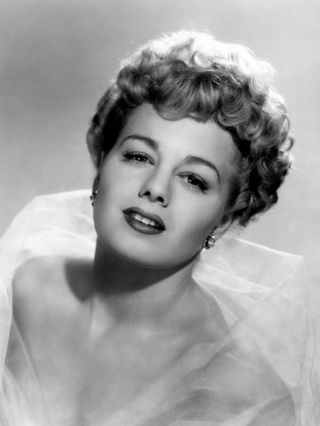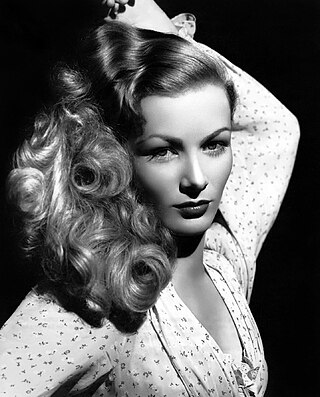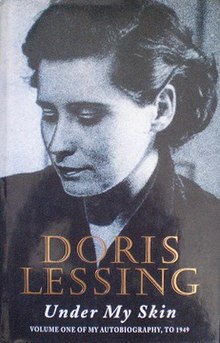
Doris Day was an American actress and singer. She began her career as a big band singer in 1939, achieving commercial success in 1945 with two No. 1 recordings, "Sentimental Journey" and "My Dreams Are Getting Better All the Time" with Les Brown and His Band of Renown. She left Brown to embark on a solo career and recorded more than 650 songs from 1947 to 1967.

Kirk Douglas was an American actor and filmmaker. After an impoverished childhood, he made his film debut in The Strange Love of Martha Ivers (1946) with Barbara Stanwyck. Douglas soon developed into a leading box-office star throughout the 1950s, known for serious dramas, including westerns and war films. During his career, he appeared in more than 90 films and was known for his explosive acting style. He was named by the American Film Institute the 17th-greatest male star of Classic Hollywood cinema.

Melissa Lou Etheridge is an American singer, songwriter, musician, and guitarist. Her eponymous debut album was released in 1988 and became an underground success. It peaked at No. 22 on the Billboard 200 and its lead single, "Bring Me Some Water", garnered Etheridge her first Grammy Award nomination for Best Rock Vocal Performance, Female in 1989. Her second album, Brave and Crazy, appeared that same year and earned Etheridge two more Grammy nominations. In 1992, Etheridge released her third album, Never Enough, and its lead single, "Ain't It Heavy", won Etheridge her first Grammy Award.

Doris May Lessing was a British novelist. She was born to British parents in Iran, where she lived until 1925. Her family then moved to Southern Rhodesia, where she remained until moving in 1949 to London, England. Her novels include The Grass Is Singing (1950), the sequence of five novels collectively called Children of Violence (1952–1969), The Golden Notebook (1962), The Good Terrorist (1985), and five novels collectively known as Canopus in Argos: Archives (1979–1983).

Shelley Winters was an American film actress whose career spanned seven decades. She won Academy Awards for The Diary of Anne Frank (1959) and A Patch of Blue (1965), and received nominations for A Place in the Sun (1951) and The Poseidon Adventure (1972). She also appeared in A Double Life (1947), The Night of the Hunter (1955), Lolita (1962), Alfie (1966), Next Stop, Greenwich Village (1976), and Pete's Dragon (1977). She also acted on television, including a tenure on the sitcom Roseanne, and wrote three autobiographies.

Jane Powell was an American actress, singer, and dancer who appeared in Metro-Goldwyn-Mayer musicals in the 1940s and 50s. With her soprano voice and girl-next-door image, Powell appeared in films, television and on the stage, performing in the musicals A Date with Judy (1948), Royal Wedding (1951), Seven Brides for Seven Brothers (1954), and Hit the Deck (1955).

Constance Frances Marie Ockelman, known professionally as Veronica Lake, was an American film, stage, and television actress. Lake was best known for her femme fatale roles in film noirs with Alan Ladd during the 1940s, her peek-a-boo hairstyle, and films such as Sullivan's Travels (1941) and I Married a Witch (1942). By the late 1940s, Lake's career began to decline, due in part to her alcoholism. She made only one film in the 1950s, but made several guest appearances on television. She returned to the big screen in the film Footsteps in the Snow (1966), but the role failed to revitalize her career.

Haing Somnang Ngor was a Cambodian-born American actor. He won the Academy Award for Best Supporting Actor for his portrayal of Dith Pran in the biographical drama film The Killing Fields (1984). He was murdered in Los Angeles in 1996.

Esther Jane Williams was an American competitive swimmer and actress. She set regional and national records in her late teens on the Los Angeles Athletic Club swim team. Unable to compete in the 1940 Summer Olympics because of the outbreak of World War II, she joined Billy Rose's Aquacade, where she took on the role vacated by Eleanor Holm after the show's move from New York City to San Francisco. While in the city, she spent five months swimming alongside Olympic gold-medal winner and Tarzan star Johnny Weissmuller. Williams caught the attention of Metro-Goldwyn-Mayer scouts at the Aquacade. After appearing in several small roles, and alongside Mickey Rooney in an Andy Hardy film and future five-time co-star Van Johnson in A Guy Named Joe, Williams made a series of films in the 1940s and early 1950s known as "aquamusicals", which featured elaborate performances with synchronised swimming and diving.

Brett Butler is an American actress, writer, and stand-up comedian. She is best known for playing the title role in the ABC comedy series Grace Under Fire (1993–1998), for which she received two Golden Globe Awards nominations.

Jeff Chandler was an American actor. He was best known for his portrayal of Cochise in Broken Arrow (1950), for which he was nominated for the Academy Award for Best Supporting Actor. He was one of Universal Pictures' more popular male stars of the 1950s. His other credits include Sword in the Desert (1948), Deported (1950), Female on the Beach (1955), and Away All Boats (1956). He also performed as a radio actor and as a singer.

Maila Elizabeth Syrjäniemi, known professionally as Maila Nurmi, was an American-Finn actress who created the campy 1950s character Vampira.
Doris May Fisher Stokes, born Doris Sutton, was a British spiritualist, professional medium, and author. Her professed ability to communicate with the dead, public performances, television appearances, and memoirs made her a household name in Britain. During her lifetime she was a controversial figure, with some believing her to possess psychic abilities, but investigations published after her death demonstrated that she used techniques including cold reading, hot reading, and planting accomplices in her audience, giving the appearance of having paranormal abilities.

Doris Helen Kearns Goodwin is an American biographer, historian, former sports journalist, and political commentator. She has written biographies of numerous U.S. presidents. Goodwin's book No Ordinary Time: Franklin and Eleanor Roosevelt: The Home Front in World War II won the Pulitzer Prize for History in 1995. Goodwin produced the American television miniseries Washington. She was also executive producer of "Abraham Lincoln,” a 2022 docudrama on the History Channel. This latter series was based on Goodwin's Leadership in Turbulent Times.

Tsai Chin is a Chinese-British actress, singer, director, and teacher. Her career spans more than six decades and three continents.

Constance Mary Towers is an American film, stage, and television actress, and singer. She gained prominence for her appearances in several mainstream 1950s films before transitioning to theater, starring in numerous Broadway productions through the 1970s. Her accolades include two Emmy Award nominations.
Under My Skin may refer to:
Gottfried Anton Nicolai Lessing was a German lawyer, political activist, and diplomat.

Linda Lovelace was an American pornographic actress who became famous for her performance in the 1972 hardcore film Deep Throat, which was an enormous success. She later alleged that her abusive husband, Chuck Traynor, had threatened and coerced her into participation. In her autobiography Ordeal, she described what went on behind the scenes. She later became a born-again Christian and a spokeswoman for the anti-pornography movement.

The 2007 Nobel Prize in Literature was awarded to the British novelist Doris Lessing (1919–2013) as "that epicist of the female experience, who with scepticism, fire and visionary power has subjected a divided civilisation to scrutiny." Lessing was the oldest person ever, at age 88, to receive the Nobel Prize in Literature followed by the German historian Theodor Mommsen, who received the prize at age 85. She is also the third-oldest Nobel laureate in any category. She became the 11th woman to be awarded the prize.

















